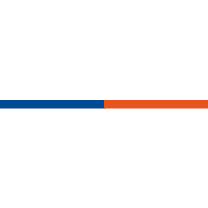History
At the 1999 round table which took place in Limbe, recommendations on port reforms were made. Businesspersons and Cameroon’s authorities discussed on the formalities requiredforimporting and exporting goodsat the Douala port. Thevery long delays noticed andtheir accompanying costs were deemed as being detrimental to the local economy and diverting traffic to other ports. Following this assessment, the State of Cameroon and professional stakeholders in the clearance of goods decided to create the Single Window For Foreign Trade (GUCE) so as to simplify procedures on importing and exporting goods, and reduce related costs and clearance time through the physical or virtual grouping of all stakeholders.
Missions of the Single Window For Foreign Trade
The missions of the Single Window For Foreign Trade consist in:
- Reducingthe time spent by goods at the port;
- Simplifying procedures for importing and exporting goods, consequently improving the quality of the services of clearing agents and the port area as a whole;
- Improving economic activity and increasing its impacts on the Douala port;
- Making Douala port open to the rest of the world with a view toraise it to the rank of one of the most organised and most modern ports in the world.
Objectives of the Single Window For Foreign Trade(Guce)
The Single Window For Foreign Trade was designed to accelerate foreign trade formalities by making it such that documents should move from one stakeholder to the other as speedily as possible.
The GUCE seeks to:
- Physically or virtually group external trade transaction formalities in order to ease their smooth-running and save time, since each stakeholder within the group has a relevant unit where formalities are carried out ;
- Publish and distribute Cameroon’s external trade transactions reporting documents in collaboration with the administrative departments and clearing agencies involved ;
- Manage an integrated IT system intended to simplify procedures as well as maintain system equipment ;
- In general, ease all additional or corporate-purpose related transactionslikely to improve its efficiency and effectiveness.
Evolution of the Single Window For Foreign Trade (GUCE)
The Single Window For Foreign Trade was set up in two phases:
Phase One: The Physical Single Window for foreign trade .
Functional since 25th August 2000, the Single Window For Foreign Trade physically brings together most of the external trade public- and private-sector stakeholders in one building located at the maritime affairs centre in Douala. In this way, businesspersons do not have to carry heavy files from one end of the town to the other, which makes them incur expenses due to the movement and numerous photocopies. Save for exceptional cases, they have just one port of call – the Single Window for foreign trade (GUCE)
Phase Two: The Electronic the Single Window for foreign trade (GUCE).
The second phase began in 2008 with the advent of the first electronic procurement. This phase concerned the online provision of documents and forms, authentication of certificates and the electronic processing of files in order to attain the first objective of reducing costs and curtailing the time spent by goods at the Douala port.
Structure and organisation
The Single window of the Operations of the Foreign trade is an Economic interest group (GUCE-GIE), whose new statuses were adopted on May 15th, 2009.
His governing body consists:
- The General Assembly;
- The Board of directors;
- The Head Office.
The General Assembly
This is the decision-making organ charged with the task of taking major policy decisions. It :
- Draws the main guidelines on external trade procedures;
- Decides on reports submitted by the Board of Directors and those of the Auditor;
- Examines corporate accounts and performance;
- Determines the amount for the remuneration of the Directors;
- Determines the allowance of the Board Chairman;
- Appoints the Auditor and determines the amount of his remuneration.
The Board of Directors
This is the executive organ invested with the most extensive powers to act on behalf of the Group in all circumstances. It: :
- Specifies the objectives of the EIG and the guidelines to be given to its Administration ;
- Carries out constant checking of management ensured by the General Manager ;
- Examines and adopts the action plan and budget proposed by the General Manager ;
- Examines and adopts the organisational chart and the internal rules proposed by the General Manager ;
- Determines staff salaries and benefits on the proposal of the General Manager ;
- Recruits and dismisses supervisory staff on the proposal of the General Manager;
- Appoints officials to posts of responsibility starting from the rank of Deputy Director and officials of similar status on the proposal of the General Manager ;
- Closes the accounts of each financial year and draws the management report on the Group’s activity, all of which are submitted to the General Assembly in its ordinary session for approval.
The General Management
This is the operational body responsible for the daily running of Guce. It is led by the General Manager, who is appointed by the Board of Directors.
The General Manager of Guce is responsible for management and for the implementation of the policies of the organization. The General Manager reports to the Board of Directors. is The General Manager is authorized with the most extensive powers which are exercised within the limits of the corporate purpose, subject to those expressly granted to General Assemblies or specially reserved to the Board of Directors by legal or statutory provisions. As such, his duties include but are not limited to:
- Ensuring, in compliance with the Articles of Association and resolutions of the Board of Directors, the supervision and management of thethe Single Window for foreign trade (GUCE) ;
- Contracting loans and granting all forms of financial guarantees after consulting the Board of Directors;
- Ensuring custodianship of the funds of Guce the in financial bodies with which it deals;
- Preparing the budget (of which he is authorising officer) and annual financial statements and activity reports;
- Recruiting, appointing, grading and dismissing members of staff, and determining their salaries and benefits in the respect of the laws in force, internal rules, budget forecasts and decisions of the Board of Director ;
- Managing the Group’s movable and immovable, tangible or intangible assets in the respect of the corporate purpose;
- Representing the Group in all acts of civil life and before the Law;
- Proposing, to the Board, the internal organisation of the Group and signing all contracts and special agreements ;
- Approving technical studies and projects, and overseeing the performance of all works and delivery of all orders in the respect of competition rules ;
- Awarding contracts and placing orders, in compliance with the laws in force ;
- Running the secretariats of the Board of Directors and the General Assembly.
- Only Licensed Customs Brokers and importers of second-hand vehicles are allowed into Guce in compliance with legal provisions.
- Transit companies which make use of these clearing agents should be holders of a license in customs brokering issued by the Directorate General of Customs, which license implies professional competence and the effective submission of a bank guarantee, in such a manner as to provide the Administration with safeguards (since customs brokers contribute to the collection of duties and taxes). Only Licensed Customs Brokers with membership in a union have access to the services of Guce.
- It is through an explicit mandate that businesspersons authorise their service-providers (Licensed Customs Brokers) to represent them in acts carried out in Guce. This representation mandate may take the form of a Service Order, Instruction Form or Power of Attorney.
The Electronic Single Window for foreign trade (GUCE)
The Electronicthe Single Window for foreign trade (GUCE)isan IT platform which remotely links the various external trade players. It was designed to significantly improve on procedures.
With time, it will enable :
- The elimination of paper-based media and the dematerialisation of all external trade procedures and formalities ;
- The elimination of human contact ;
- The saving of time ;
- The real-time tracking of transactions ;
- The securing of documents ;
- The securing of financial transactions and improvement of revenue.
Technical aspects
The Gucehas material, software and IT infrastructure mainly comprising:
- A software and material platform for electronic data sharing whose role is to host and enable the implementation of electronic procurement ;
- A web community service portal enabling users to access the various services of the GUCE, including the implementation electronic procurement ;
- A secure value-added WWL (Wireless Local Loop) network whose role is to ensure the interconnection of the GUCE information system with those of the main external trade players (administrative departments, technical services, banks, etc.) ;
- An information centre used in the production of the various external trade statistics, particularly those on the time spent by goods in the port.
Businesspersons or their transit agents can remotely carry out all import and export procedures through the Internet or through the secure private network of the the Single Window for foreign trade (GUCE) Through the same channels, they can also access the value-added Customs IT network (SYDONIA).
GUCE video

GUCE remains at your disposal.
For more information, contact we directly from
Nos partenaires





